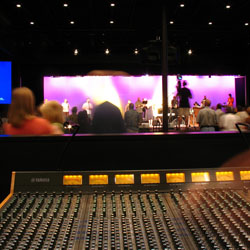
Analyze your needs now as well as the next three-to-five years.
It’s a fact that the realistic lifecycle for many audio products has dramatically shortened. In my view, this isn’t due to issues of product reliability but to the reality of an ever-rapidly changing market and always increasing production demands.
Take this into careful consideration, and don’t hesitate to pull out your crystal ball. (I’m only partially kidding!) But try to intelligently project out the life of a console. Will it work well as a main, staple unit for now, and then become a lesser important but still-needed part of the inventory in five years? These are the types of questions to ask.
Staple items along these lines:
• Anticipate the total number of channels needed
• Forecast the number of additional sends (monitors, recording feeds)
• Evaluate rider friendliness that will operate the board
• Think through how you like to manage a system and mix with subgroups and outputs. For example, do you want/like need left-right, left-right-mono or left-center-right?
My opinion is that the greatest advancement in medium-format consoles has to be the extended routing capabilities.
It’s so common now to find at least six aux sends and even some matrix outputs on lower prices models. With the proliferation of in-ear monitors, live recording, web streaming, audio for video recording, auxiliary meeting sites and the like, it seems like there’s always a need for an additional aux send.
Next on my list of advancements is extended EQ capability. No longer are we limited to “just” the typical high, mid and low EQ knobs. Now we have sweepable functionality for so much more fine-tuning precision. It’s really rather remarkable.
Price, of course, plays a big role as well. But go beyond “how much now” and look at the investment. In other words, you might well be able to get by for a while with a 24-channel board with “good enough” routing and feature sets, but how will that investment look in three years?
Also keep in mind that a quality used console, in good condition, can fetch a nice price, so if you’re going to be looking to “trade up,” factor this in. (And keep it in mind if you’re looking for a less-expensive way to move up.)
I’ve spent a lifetime mixing on medium-format (and their smaller offshoot) consoles, and we have something in common: neither of us is remotely close to being done with providing useful service.
So just watch who you’re calling “old”!
Gary Zandstra is a professional AV systems integrator with Parkway Electric and has been involved with sound at his church for more than 30 years.
